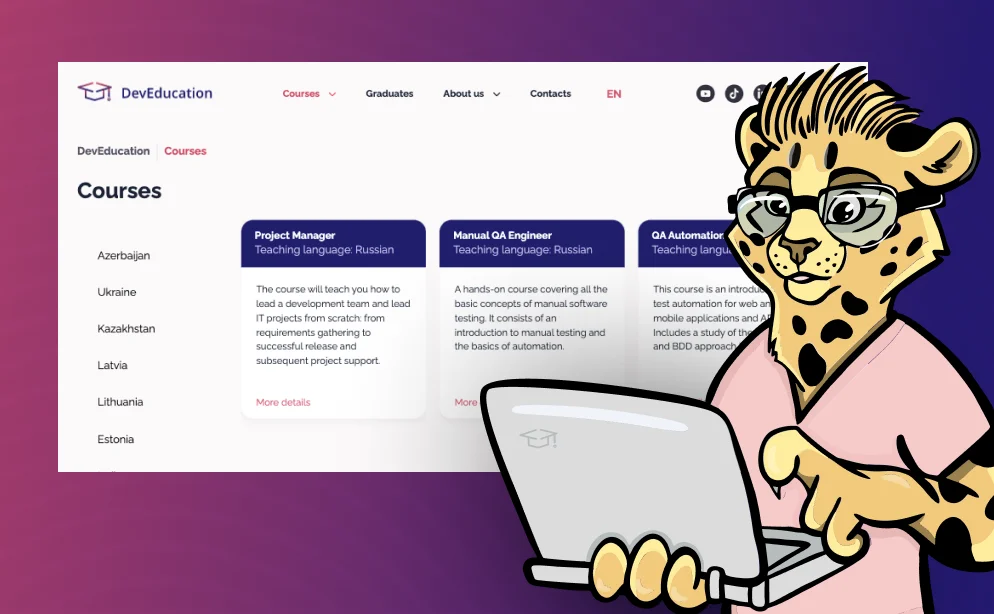A solution architect is a person placed in charge of identifying problems within a company, a particular project, or a group that is affecting the entity’s bottom line. Depending on the arrangement made by the individual companies, the job can be anywhere from simple investigation to full-on overhaul. A part of this job role is that the stakeholders have to be constantly updated about products – its development, process, and budget – something that requires translating technical details into layman language.
- Most of the certification platforms, besides the exam itself, offer training courses, learning materials, and practice tests.
- Other crucial roles exist, namely Enterprise Architect and Technical Architect, which contribute significantly to an organization’s IT strategy.
- At IntelliSoft, we know that solution architects are the secret ingredient to any business’s success.
- Many large systems—satellites, vehicles, robotics, medical devices, and more—have both cyber-physical and large-scale IT elements.
- However, the exam can be taken without previous preparation — all that is required is deep knowledge of the architecture concepts and principles and a vast hands-on experience in the industry.
The architecture field within an IT organization is rich and varied, extending beyond the role of a Solutions Architect. Other crucial roles exist, namely Enterprise Architect and Technical Architect, which contribute significantly to an organization’s IT strategy. While all three professions share some commonalities, they have different focuses. For example, if we talk about integration with existing solutions, then a new project must be created using particular technologies to comply with the corporate system.
Key Processes in Solution Architecture
Consider a course in software architecture to better familiarize yourself with the most common solution architectures. Or consider a specialization such as IBM’s for DevOps, Cloud, and Agile Foundations to learn some of the most popular concepts and methodologies for managing the development process. An enterprise architect is a role that defines and governs the overall architecture of an organization, across multiple domains, systems, and solutions. An enterprise architect establishes the enterprise architecture vision and strategy, as well as the enterprise architecture framework and principles.

Understanding these scenarios’ complexity and potential impact makes it clear why and when an organization might need to hire an IT Solution Architect. Developer.com content and product recommendations are editorially independent. In terms of organization structure, would you think Solution Architecture team should be under Enterprise Architecture or as a standalone unit in par with Enterprise Architecture?
Solution architecture and its main processes
Designing a solution requires understanding how different parts of the business work together. The architect must recognize the corporate strategy and realize all business processes that define how a company achieves its strategic goals. As a result, solution architects constantly deal with analytical work and move between various business layers. In a rapidly changing technology environment, organizations face the need to transform their processes and systems to meet emerging business requirements. This digital transformation demands specific expertise and a set of practices to align business focus with technology solutions. Looking for a way to build your skills and expertise as a solutions architect and add to your existing resume?

An individual who has been able to ace this skill will be able to best meet the “fail-fast” mindset of the modern day startups. The solutions architects should be able to gauge not just the technical and business implications of the solution they are proposing but also the kind of risk it may add and the impact which the risk would carry. While these elements are “constraints”, they come with their own set of limitations. It comes down to the solution architect to understand them, look at their priority, and make managerial, technical decisions to solve these issues well within the business goals. One of the primary set of tasks that answers what a solution architect does is meeting the individual stakeholders’ requirements. Typically, these requirements come in from both technical and non-technical stakeholders where both have to be accounted for in the project.
What Is a Solutions Architect (and How Do I Become One)?
So, being the one who knows the ultimate target, they guide the development process accordingly. While a solution architect doesn’t directly get involved in project management, accounting for deadlines and given resources is inevitable. Solution architects must be able to make decisions about which solutions are advantageous and which are worthless in a given situation.
One of the most sought-after roles in software development companies is as a solution architect. The solution architect works with the development team to create and integrate information and computing systems that meet specific needs. In other words, architect duties are connected with integrating software and hardware. Solution architects design solution architect performance goals and configure software products to solve a specific business problem. They often work in the cloud computing industry, wherein businesses rely on them to configure the company’s cloud architecture. This process requires cross-team collaboration between networking, data storage, data processing pipelines, data security and many other disciplines.
Software Business Models, Examples, Revenue Streams, and Characteristics for Products, Services, and Platforms
They help determine, develop, and improve the technical solutions that are aligned with business objectives. We invite you to explore our top client cases, where you can gain insights into how we have transformed business https://www.globalcloudteam.com/ challenges into success stories and understand the tangible benefits of custom software solutions. Rest assured, opting for Relevant means choosing a trusted partner dedicated to your technological success.

Addressing solution architecture problems is delegated and shared across other roles within a product team. A solution architect is the most general and broad role in solution architecture. A solution architect oversees the entire solution lifecycle, from the initial analysis and design to the implementation and testing. A solution architect needs to have a solid understanding of the business domain, the technical domain, and the best practices and methodologies for solution design and delivery. In general, the solutions architect’s role is to explain the business requirements to the development team and lead them in building a product that can solve real business issues effectively. The position is very responsible and requires wide-ranging IT skills and knowledge.
Skills and qualifications
Being delayed can mean a lot of money lost for bigger entities while for smaller ones, it can mean complete failure. This sample job post will introduce your organization’s culture and values, while helping potential candidates understand how they’ll contribute from Day 1. Use this Solution Architect job description to advertise your vacancies and find qualified candidates. Perform with sales personnel on every customer visit to converse requirements as well as perform demonstrations.

Their proficiency lies in designing, implementing, and troubleshooting within their domain of expertise. The Technical Architect’s role is more granular, working within the framework laid down by the Enterprise Architect, focusing on how specific technologies can be applied to achieve that overarching vision. A solution architect is sometimes confused with enterprise architect and software architect. This is because their positions sound similar and the responsibilities overlap partially. Yet, each role is essential for a project’s success and cannot be substituted by another position.
Solutions Architect
As the name suggests, a technical architect focuses on engineering aspects of architecture and usually does not make financial or strategic decisions, unlike infrastructure or enterprise architects. These specialists determine how exactly software technologies should be used to meet the customer’s demands. So, if enterprise architects use strategic thinking and decide what needs to be done, then technical architects are tacticians who decide how things should be done. In the context of software development, an architecture represents both the structure of the future software product and the plan of building it in order to meet client’s requirements and solve their specific problem. This definition may seem vague and generic, but only because customers’ problems are different, so they demand different solutions, usually with a unique approach.
